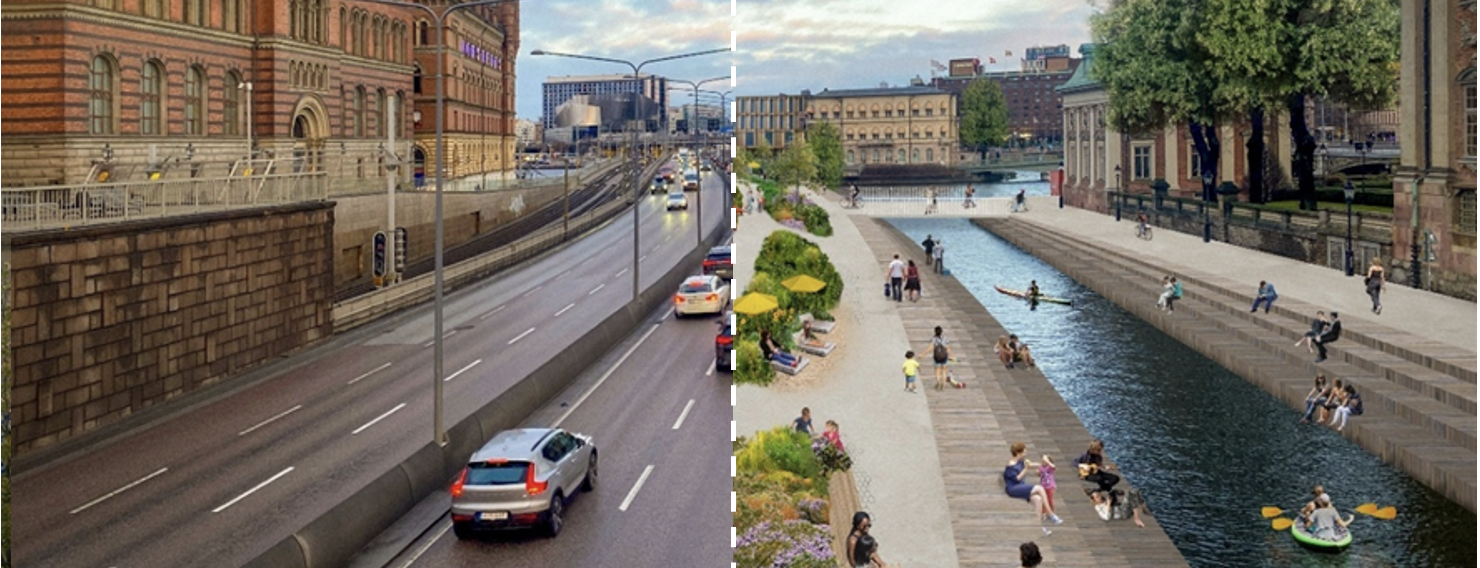If the city is a technology, can we use scenario thinking to design what it should solve for in the future?
Cities are slow-changing technologies. How can we build and design them for fast-moving and uncertain worlds? Scenario thinking might help.
But before discussing scenario thinking, let’s consider the word technology; we tend to think of phones or computers when we hear it, not cities. Yet if we define a technology as a system wherein components are combined to solve for something, cities - and how they come about - could also be analyzed through this lens.
Think of how Apple designs its iPhone: no engineer would develop a chip (one component) without considering what the device (system of components) must ultimately deliver; in this case - communication, creativity, and connection. Similarly, when we design buildings or plan for street networks, we are designing the components and operability of a larger system. The question is: what do we want that system - the city - and its components to solve for?
An urban system can solve for different things like mobility, serendipity, safety, belonging, beauty, or emergence. Productivity or play. Wealth extraction or wealth creation. Depending on what we choose to optimize for - and enable - the city takes on a different form.
A great example of the city as a system is architect Elizabeth Diller’s work on New York’s High Line[i]. Once dismissed as a derelict stretch of elevated rail - “$150 million worth of wasted square meters,” as critics said - it’s now one of the city’s most valued and appreciated public spaces. How much is that worth?
The redevelopment didn’t extract value by selling or exploiting land. It created value by unlocking new forms of social life, movement, and potential for encounters. Today, the High Line generates billions in local investment and tax revenue (far outstripping $150 million) by transforming how the surrounding city functions and relates to the space. It illustrates the value generation that is possible when we think of cities as systems[ii].
This story is a practical example of what economist Mariana Mazzucato calls value creation rather than value extraction[iii]. Tearing down the High Line would have allowed developers to extract value from the site’s existing worth. Instead, the project created value - public space, greenery, and higher surrounding land value - multiplying benefits across the system.
If we choose to the see the city as a system, the question of what that system should and could be solving for surfaces at the heart of every architectural sketch, urban plan or regenerative project. In this sense urban planning and architecture can also be seen as strategic instruments for the kind of society we wish to build. It opens to a creative field where aesthetics meets systems thinking. Beyond solving for function or form for present needs, planning and architecture can also solve for futures.
Building solid things for an uncertain future
If we imagine the city as a slow-changing technology that - once built - is likely to maintain much of its form for generations (sometimes centuries), it implies that we should think deeply about the design choices we make. In an increasingly fast changing world and society where ‘uncertainty’ is at the heart of our zeitgeist, we need to imagine possible futures to understand what we might want - and need -our cities to be solving for in the future.
One way to operationalize future oriented design is through scenario thinking - by most definitions, a way to explore possible images of the future[iv]. At Kairos Future, we use scenarios as canvases to engage with what the world might look like institutionally, socially, economically, or geopolitically. The strategic focus sets the frame. What happens if we start inserting what we want the urban form to solve for into those canvases? What definitions of value are used as parameters for evaluation? What kinds of structures begin to emerge?
Scenario thinking lets us explore multiple futures, visualizing what paths lead to each - and what must be true for one to become preferable over another. Whatever future emerges, it will not be by chance - it will be shaped by the choices made now, through the cities planned for and built today.
So, what do we want the urban system to solve for in a future that feels attractive to us? What definitions of value would have to be true for that scenario to exist -and what needs to happen, or not happen, to get there?
By asking “How can we build for value creation in the future tense?” we add a new layer of agency to the creative capacity of the planner and the architect.
When paired with intentional design, scenario thinking helps us cultivate urban futures literacy - the ability to reason about, and design for, the kind of city we want to inhabit tomorrow. It turns planning into a laboratory for exploring possible worlds. Cities are, after all, technologies that shape our lives; through scenario work, we can begin to prototype the futures we truly want to live in.
Kairos Future recently explored scenario thinking for urban futures in the ShiftSweden och Vinnova funded project Superlines in collaboration with Spacescape, Placetoplan, White Architects and M4Traffic. The project reimagined Stockholm’s Centralbron through four distinct scenarios.
 Image: Stadsbyggnadskontoret
Image: Stadsbyggnadskontoret
Each one told a different story about the future of urban infrastructure - from post-car mobility to climate-adapted cityscapes - and each led to radically different architectural expressions. You can find more information about the project here and a podcast episode about the experience will be published soon. Stay tuned for updates.
[i] Elisabeth Diller, The City Before the Form, Keynote at Utopian Hours, Turin. 2025
[ii] Lars Marcus, Stadens stenar: Om stadsbyggnadens morfologi. Arkitektur Förlag. 2019
[iii] Mariana Mazzucato, The Value of Everything: Making and Taking in the Global Economy. Allen Lane. 2018
[iv] Kees van der Heijden, Scenarios: The Art of Strategic Conversation, John Wiley & Sons. 2005

